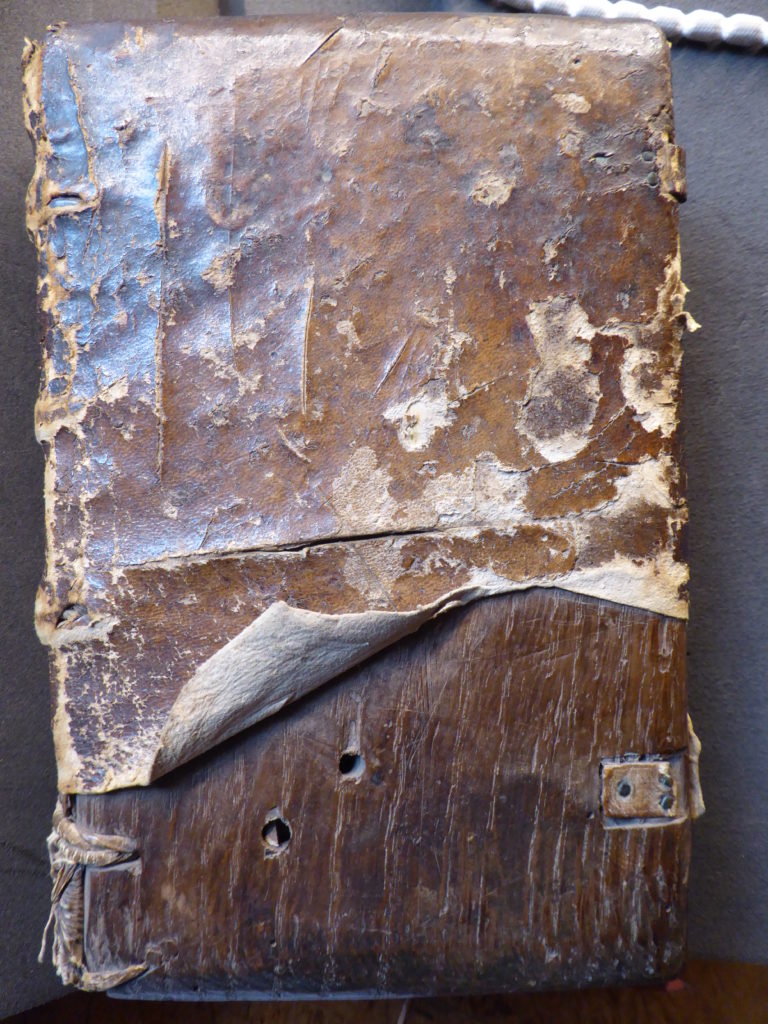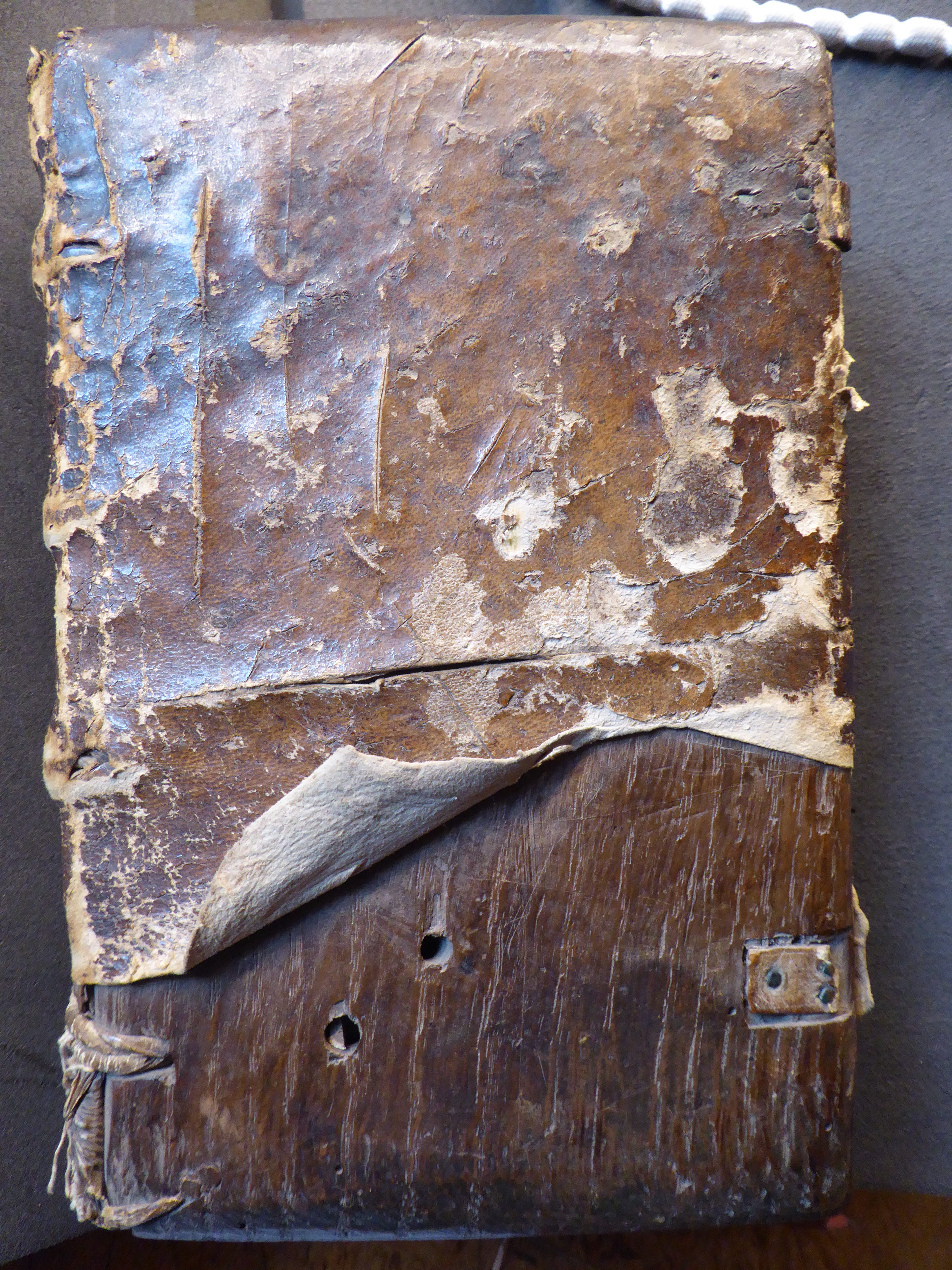This is a trimmed and lightly edited version of a paper I gave in the Bodleian’s Weston Library in January 2019. I was asked to say something useful to graduate students across a range of humanities disciplines, and so I set out to demonstrate the potential interest of manuscripts which might seem to us to be normal and boring.
I think there might be some useful points made here, and I doubt I can publish it elsewhere, so I’m going to put it out as a blog post in case it might help anyone.
I’d like to look at a ‘dull’ or ‘mediocre’ later medieval English literary manuscript and bring out what might be interesting about it. Such manuscripts by no means the ugliest and messiest productions, but they’re also a long way from being the most luxurious, and they rarely receive attention.
It is (I think) by looking at seemingly dull, normal manuscripts that we might learn the most: normal manuscripts are the crucial context for the exceptional books which excite us, and normal manuscripts also let us study normality, a neglected topic in and of itself.

Let’s consider MS Laud Misc. 486. This book contains a copy of The Prick of Conscience, the most widely-witnessed medieval English poem. We usually ignore this text because of the sheer number of surviving copies and because of its content, which modern taste finds rebarbative. The poem is followed by a copy of Gregory the Great’s Cura Pastoralis by the same scribe.
The very brief online description of this manuscript would probably not excite us. But in fact the book offers many points of interest.
Binding
The first thing we notice, of course, is that this book actually has a surviving medieval binding—immediately making it rarer than it sounded when I described it earlier. Now, I’m no great expert on bindings, but I can say that this is broadly speaking a typical English Gothic binding layout according to J. A. Szirmai’s survey (1999, 216–234). It probably dates from before c. 1450.
The one atypical feature is the arrangement of lacing paths on the inner board here, which combines two types (Szirmai Type E at the top and bottom, Szirmai Type B for these here). I suspect something’s up with the sewing supports, and broader studies of sewing supports in surviving English bindings might illuminate it; or perhaps one of you knows the answer.
There is, then, a curious little puzzle in this binding. The fact that this is a surviving later medieval binding also gives us reason to believe that the manuscript as a whole, not just the book block, has stayed more or less as it is since the middle of the fifteenth century, at least, and this fact will become relevant later.
Handwriting
The first text in the manuscript is The Prick of Conscience, copied in what is (in the terminology of Malcolm Parkes) anglicana formata with some cursive tendencies.
This book also, however, contains a copy of Gregory’s Cura Pastoralis, copied by the same scribe in subtly different handwriting. In copying Gregory the scribe used more restraint in vertical strokes, with the minims in particular noticeably being more regularised. The resulting writing takes on a hint of the closely woven appearance of textualis. Unlike in the English writing, the scribe avoids ‘backwards’ e, even in word-final positions.
Another topic which it seems to me deserves much more extensive investigation across manuscripts is the variation in handwriting between different languages. We know that this phenomenon exists, but, at least for later medieval England, I’m not aware of any large-scale studies of it.
Indeed I’d suggest this is one topic where the early medieval palaeographers are, paradoxically, more advanced than those of us who work on later books—because, counterintuitively, they have fewer surviving manuscripts to examine. My early medieval colleagues might, of course, disagree…
Quiring
Two texts in one manuscript copied by the same scribe in slightly different handwriting might make us ask, in the irritatingly vague terms of Anglophone codicology: are these two separate ‘booklets’? That is, do they form separate codicological units which were perhaps produced at different times and might have existed separately from each other for some time before being bound?
The simple answer to this question in Laud Misc. 486 is ‘No’: the division between texts happens within quire XI (ff. 122r–123r) and the two texts share several conjoint leaves. The transition between texts does not coordinate with a transition between physical structures.
However, a more complex answer is available. My first-pass collation of the book runs as follows:
I10, II–X12, XI8, XII–XIV12, XV10, perhaps XVI10 (leaves 3–5 and 8–10 removed [I know this last bit seems like a rather extravagant speculation, but it’s my best guess having looked at the stubs visible!])
As you can see, quire XI is the only eight-leaf quire in a book otherwise constructed using ten- and twelve-leaf quires. These are not two separate booklets, but had the scribe always planned to follow The Prick of Conscience with Gregory there would have been no reason not to prepare quire XI as a standard twelve-leaf, six-bifolium structure. This manuscript is not made up from multiple booklets, but its collation is nevertheless still revealing.
The idea of the booklet (or the theory of the booklet: Gillespie 2011) shouldn’t be the end-point of our study of books’ physical structure. Collation can be much more than just a hunt for matches between textual divisions and quire divisions, and it has quieter things to tell us, if we will listen.
Weight
The weight of books is, and was, of course, very important: consider the apocryphal story of the library building which ran into trouble because its engineers hadn’t accounted for the weight of the books.
An exhibition at Durham once noted that the Lindisfarne Gospels weighs about as much as an adult badger. I looked that up, and it turns out that badgers aren’t very useful as a measure, because their weight can fluctuate dramatically across the year. It can even double: they bulk up for the winter and tend to be lean, mean and keen in spring. I hope we can do better than that.
If a manuscript is in a medieval binding, we can weigh it usefully. I’ve collected the weights of some such books myself, and Nicole Gilroy at the Bodleian has very kindly weighed some more examples for me.
If you have weight, you can compare it to rough measures of volume to establish how much weight a book has per unit of cubic space, or how dense the manuscript is. Of course, this imagines the book as a precise cuboid of uniform density, which is crude, but I would argue is also how codices are normally experienced by readers.
[At this point in the seminar I delved into some unpublished figures which will appear elsewhere in due time. But I can remark here that] from my figures, it appears that the weight of books varied much more than the size of books; and that the weights and densities of manuscripts are not simply determined by distinctions between paper and parchment as writing supports, or between different types of binding. Manuscript weight—and therefore manuscript portability—was determined by a much more complex interaction of factors.
Laud Misc. 486, meanwhile, is the densest of all the manuscripts for which I have figures. It is far from the heaviest, but for its volume it is very heavy indeed. Presumably this is because it has a full-dress thick wooden board binding on what is otherwise a relatively small book block.
Works referenced
Gillespie, Alexandra, 2011. ‘Medieval Books, Their Booklets, and Booklet Theory’, English Manuscript Studies 16, 1–29.
Szirmai, J. A., 1999. The Archaeology of Medieval Bookbinding (Aldershot: Ashgate).
See also the 2003 MWM description of this manuscript, which is valuable but also demonstrates some of the weaknesses of electronic resources over time: in my browser, at least, the incipit for The Prick of Conscience and the account of the collation, for instance, both display notation collapse.

Comments